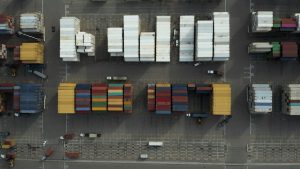The textile trade between the USA and Brazil often involves complex financial transactions, including the issue of unpaid bills. In this article, we will explore a comprehensive Recovery System for Unpaid Bills, consisting of three phases. Each phase outlines specific actions and recommendations for handling unpaid bills in the textile trade between the two countries.
Key Takeaways
- The Recovery System for Unpaid Bills consists of three phases: Initial Recovery Process, Legal Action, and Recommendations and Rates.
- Phase One involves sending letters to debtors, skip-tracing, and attempting to contact debtors for resolution within 30 to 60 days.
- Phase Two includes forwarding the case to affiliated attorneys, drafting demand letters, and pursuing legal action if necessary.
- Phase Three offers recommendations for closure or litigation, with associated legal costs and collection rates.
- The collection rates vary based on the age and amount of the accounts submitted, as well as whether they are placed with an attorney.
Recovery System for Unpaid Bills
Phase One: Initial Recovery Process
Upon initiating Phase One, swift action is taken to address unpaid bills. Within 24 hours, a series of four letters begins its journey to the debtor, utilizing US Mail as the primary delivery method. The debtor’s information undergoes a thorough skip-tracing and investigation to ensure the most accurate financial and contact details are on hand.
Efforts to resolve the matter escalate as our collector engages with the debtor through various communication channels, including phone calls, emails, text messages, and faxes. Persistence is key; expect daily attempts for the first 30 to 60 days. The goal is to secure a resolution without delay.
If these persistent attempts do not yield a resolution, the case transitions to Phase Two, where legal expertise comes into play.
The effectiveness of Phase One hinges on the immediacy of actions taken and the relentless pursuit of communication with the debtor. Below is a summary of the initial steps:
- First letter sent via US Mail
- Skip-tracing and investigation of debtor’s information
- Daily communication attempts by our collector
Should Phase One prove unsuccessful, the case is promptly forwarded to our affiliated attorneys for further action.
Phase Two: Legal Action
Upon escalating to legal action, the designated attorney within our network initiates a series of demand letters and persistent phone calls. The goal is to secure payment before proceeding to court. If these efforts prove unsuccessful, a detailed report outlining the case’s complexities is provided to you, the creditor, for further decision-making.
The decision to litigate is critical. It involves upfront costs, but also the potential for full debt recovery, including legal fees.
The costs associated with legal action are not negligible. Expect to cover court costs and filing fees, which typically range from $600 to $700. Below is a summary of potential expenses:
| Expense Type | Estimated Cost |
|---|---|
| Court Costs | $300 – $400 |
| Filing Fees | $300 – $350 |
Should you opt for litigation, our affiliated attorney will file a lawsuit on your behalf. It’s a decisive step towards reclaiming what is owed to you.
Phase Three: Recommendations and Rates
When facing unpaid bills in the USA-Brazil textile trade, Phase Three is critical for decision-making. If the debtor’s assets suggest low recovery chances, we advise case closure, incurring no fees. Conversely, choosing litigation requires upfront costs, typically $600-$700, for court proceedings.
Litigation is a serious step, demanding careful consideration of potential outcomes versus expenses. Should you opt for legal action, our affiliated attorney will pursue all owed monies, including filing costs. Failure to collect post-litigation results in case closure with no additional charges.
Our fee structure is straightforward and competitive:
- For 1-9 claims, rates vary from 30% to 50% of the collected amount, depending on the claim’s age and value.
- For 10 or more claims, the rates are slightly reduced, reflecting our commitment to volume business.
It’s essential to weigh the cost-benefit ratio of pursuing unpaid bills. Our team is here to guide you through each phase, ensuring informed decisions every step of the way.
Frequently Asked Questions
What is the Recovery System for Unpaid Bills?
The Recovery System for Unpaid Bills is a three-phase process designed to recover company funds from debtors. It involves initial recovery processes, legal actions, and recommendations for handling unpaid bills in the USA-Brazil textile trade.
What happens during Phase One of the Recovery System?
During Phase One, the debtor receives four letters via US Mail, skip-tracing and investigation are conducted to obtain financial and contact information, and collectors attempt to contact the debtor using various methods such as phone calls, emails, and text messages. If all attempts to resolve the account fail, the process moves to Phase Two.
What occurs during Phase Two of the Recovery System?
In Phase Two, the case is forwarded to an affiliated attorney within the debtor’s jurisdiction. The attorney drafts letters demanding payment from the debtor, and attempts are made to contact the debtor via telephone. If all attempts to reach a conclusion fail, recommendations are made for the next steps.
What are the recommendations in Phase Three of the Recovery System?
In Phase Three, if recovery is unlikely, closure of the case may be recommended, and no fees will be owed. If litigation is recommended, the client can choose to proceed with legal action, paying upfront legal costs. Rates for legal action and standard collection activity are also provided.
What are the upfront legal costs for proceeding with legal action?
The upfront legal costs for proceeding with legal action range from $600.00 to $700.00, depending on the debtor’s jurisdiction. These costs cover court fees, filing fees, and other related expenses.
What are the collection rates for the Recovery System?
The collection rates for the Recovery System vary based on the number of claims submitted and the age and amount of the accounts. Rates range from 27% to 50% of the amount collected, with different percentages for accounts placed with an attorney.





